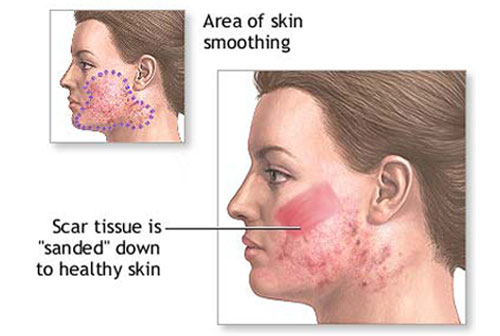Dermabrasion - what is and risks

Dermabrasion is a mechanical method for smoothing roughened or scarred SKIN. The dermabrader is a motorized burrlike device that “sands” away the layers of skin to achieve the desired result. Dermabrasion is appropriate for treating skin blemishes such as ACNE scarring or sun damage. The dermatologist administers a sedative and a local anesthetic before the procedure. After the procedure the skin is raw and tender. There is usually significant swelling and moderate discomfort that requires PAIN relief medication. The skin scabs in about 24 to 36 hours. As HEALING progresses, the scabs fall off, with the new skin pink and shiny beneath. Total healing is complete in five to six months, though most people can return to their regular activities in about three weeks. Risks and complications of dermabrasion include bleeding, INFECTION, scarring, and occasionally KELOID (overgrown SCAR) formation. Proper postprocedure care is important to encourage appropriate healing.
See also BOTULINUM THERAPY; CHEMICAL PEEL; LASER SKIN RESURFACING; PLASTIC SURGERY.